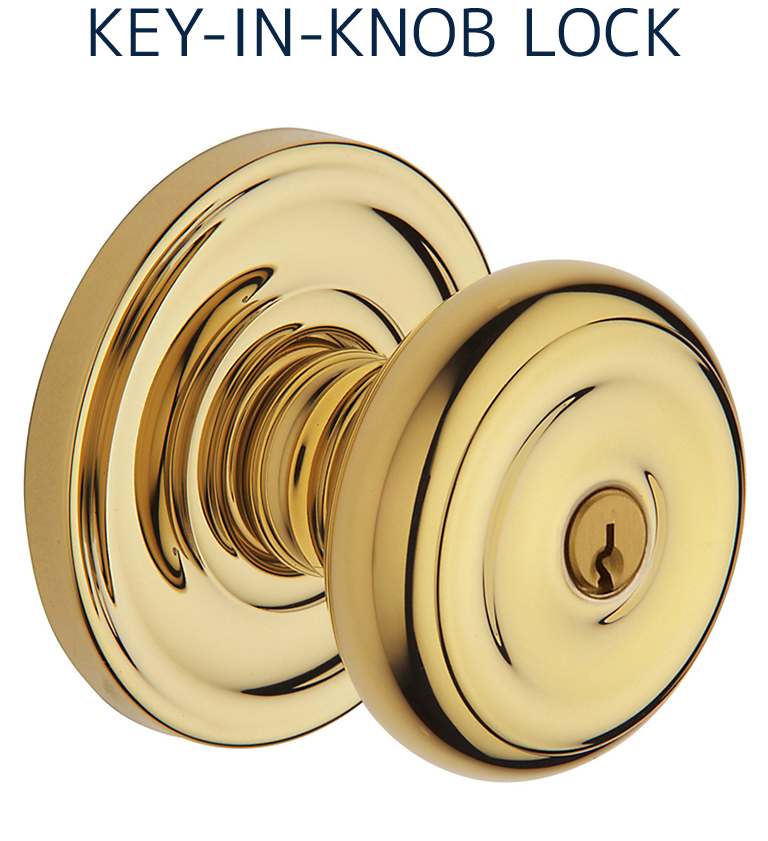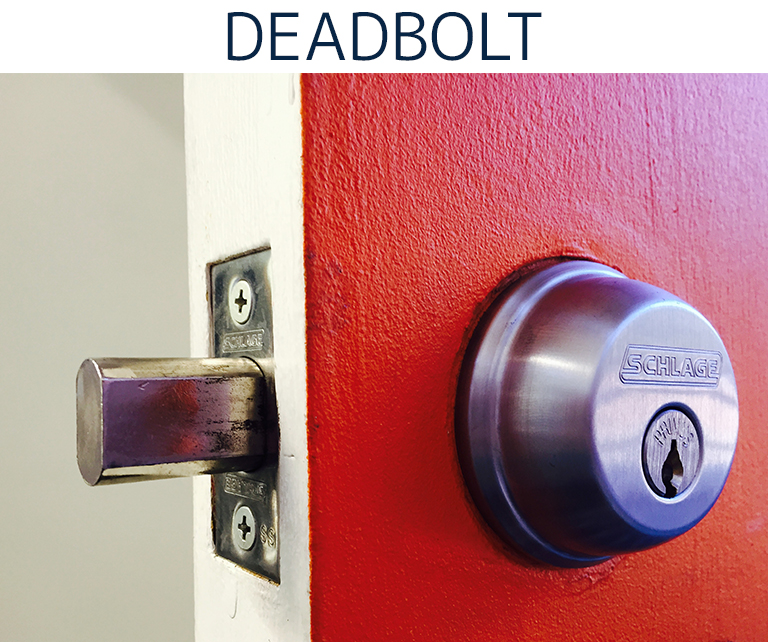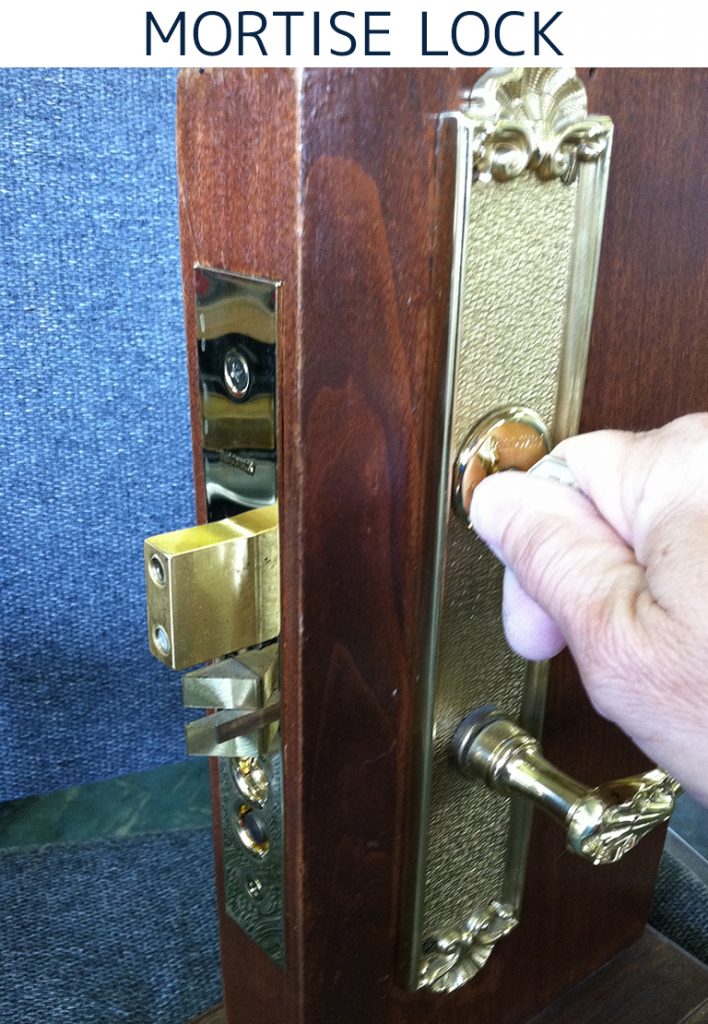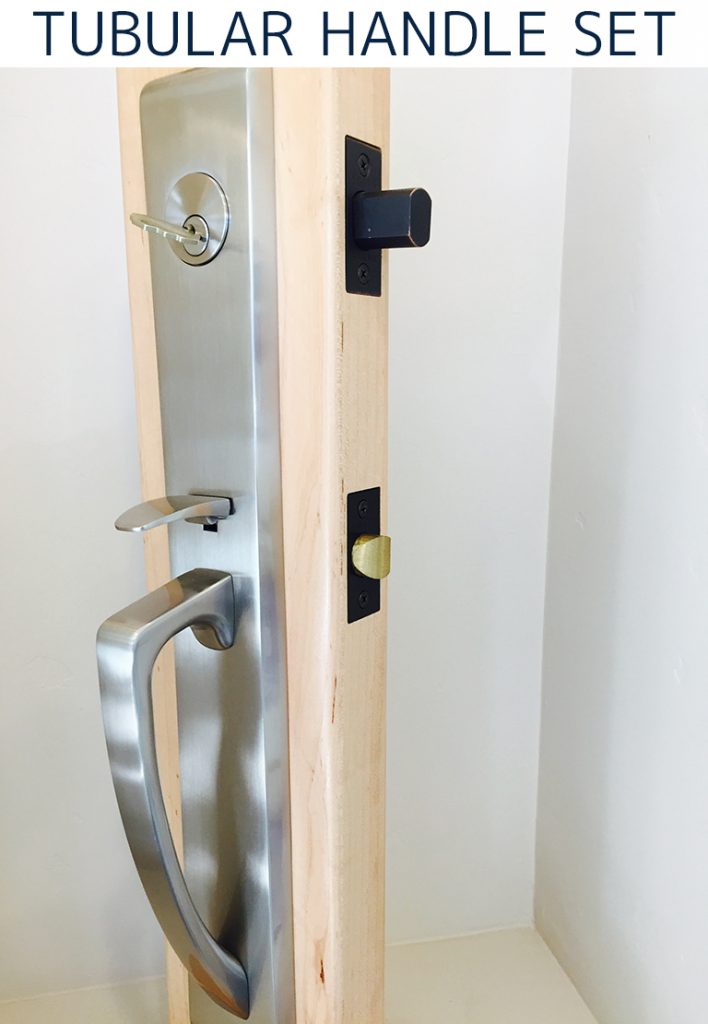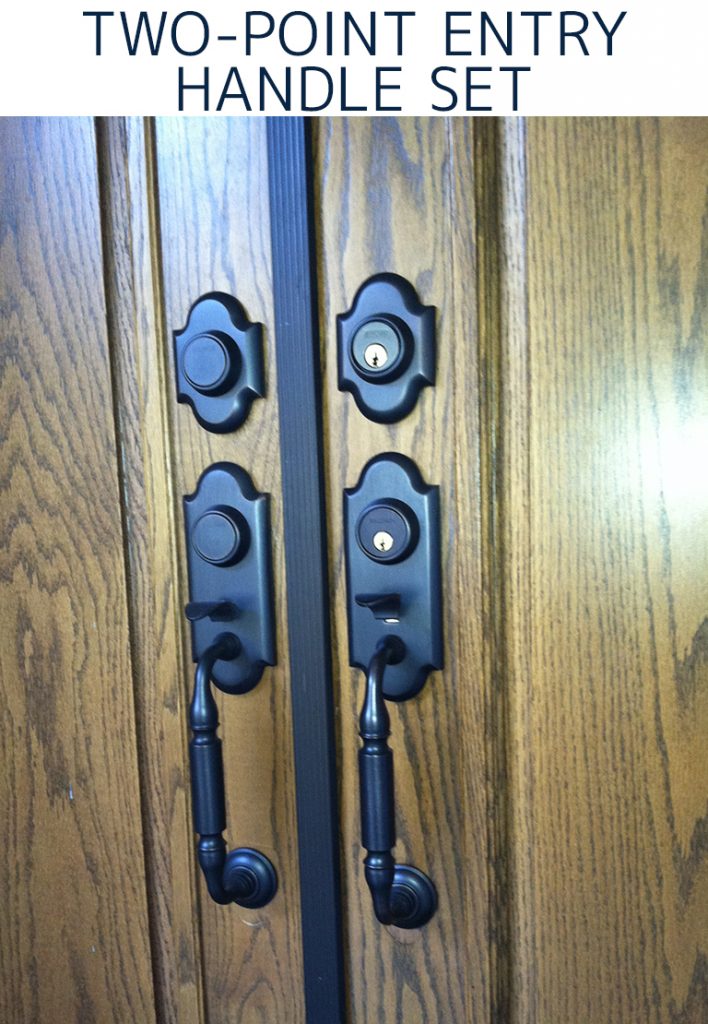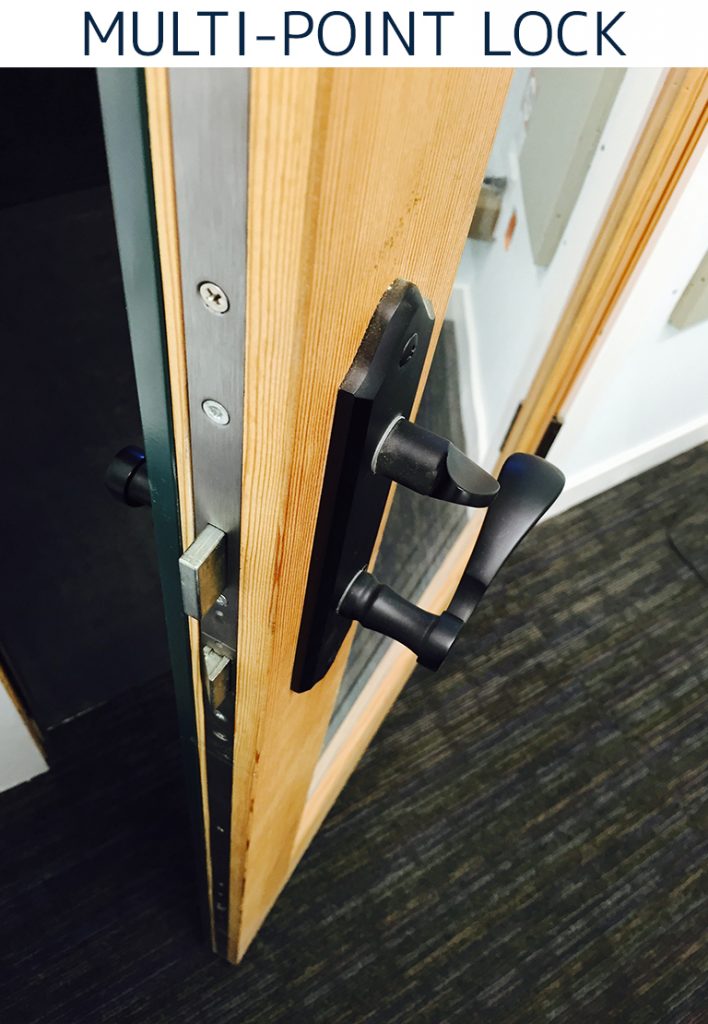WHAT TYPES OF LOCKS DO YOU HAVE?
How do I know which type of lock is on my door?
Use this page to identify the most common type of locks found in homes today. Some variations of these locks have been produced; use this to familiarize yourself with the types and functions. You will find the manufacturer’s name is imprinted on the latch face on the thin edge of the door, which is very helpful to know if discussing the details of your lock with our technicians.
1.Key-in-Knob (or Lever). These locks are identified by the following elements:
◾The key is inserted directly in to the knob or lever.
◾There is a single latch on the thin edge of the door. The latch is spring loaded and can be pushed in with your finger when the door is open.
2.Deadbolt. These locks are identified by the following elements:
◾The key is inserted into the key hole which is mounted in a trim ring, turning the key extends or retracts the lock bolt.
◾The lock is typically mounted above a knob or lever lock and is the primary security for the door.
◾The bolt is usually 1 inch long and cannot be pushed in with your finger when extended.
◾The lock is operated with a key from the outside and either a thumb-turn (known as a single cylinder deadbolt) or a key on the inside (known as a double cylinder deadbolt).
3.Mortise Lock. These locks are identified by the following elements:
◾The key is inserted in a cylinder mounted above the knob, lever or thumb-press.
◾The plate on the thin edge of the door is about 8 inches tall and has a spring loaded latch, a deadbolt and often 2 buttons or a rocker that locks and unlocks the outside knob, lever or thumb-press.
◾The lock is a combination of a latch and deadbolt, and in most cases turning the inside lever or knob will retract the latch and deadbolt simultaneously. This is known as egress function.
◾The early versions of these had a “skeleton” key hole below the knob, but we only see these on the interior doors of very old homes.
4.Tubular Entry Handle Set. These locks are identified by the following elements:
◾The knob, lever or thumb-press is non-locking.
◾The key is inserted in a cylinder mounted above the knob, lever or thumb-press and operates only the deadbolt. The deadbolt is the only locking component to the set.
◾There are 2 plates on the edge of the door. A non locking spring latch mounted below a deadbolt. These are commonly 5-1/2” on center.
◾These locks have become commonplace on the front door of newer homes and are a stripped down version of the Two-Point and Mortise lock.
5.Two-Point Entry Handle Set. These locks are identified by the following elements:
◾The thumb-press can be locked or unlocked by a cylinder mounted slightly above it on the same back plate.
◾There is a spring latch on the thin edge of the door
◾It may be installed in combination with a deadbolt mounted above it. Popular models are the Schlage E, EB series and Baldwin Two-Point.
6.Privacy Lock. These locks are identified by the following elements:
◾These are interior door knobs and levers which are used on bathrooms and bedrooms for privacy. They can be locked by a person in the room but do not have a true key operated cylinder, and can be opened with a nail file, poker or tiny screwdriver.
7.Passage Lock. These locks are identified by the following elements:
◾These are interior door knobs and levers which are typically used on doors that do not need to lock, but need to catch when they are closed such as closets and hallway doors.
8.Multi-Point Locks . These locks are identified by the following elements:
◾There is a long thin metal strip spanning the full length on the thin edge of the door, with multiple latches and a bolt. Imprinted on the metal band you will find the logo or brand names; Hoppe, Fuhr, GU and Anderson in most cases.
◾The lever handle and thumb-turn are mounted on a single narrow trim plate.
◾On most of the locks in order to lock the door the lever must be lifted to engage the latches, prior to turning the thumb-turn on the inside or the key on the outside.
